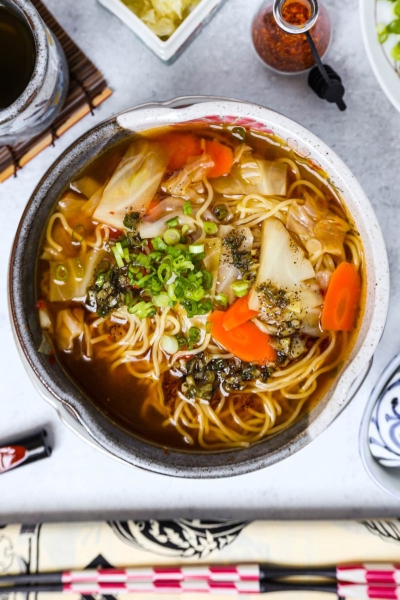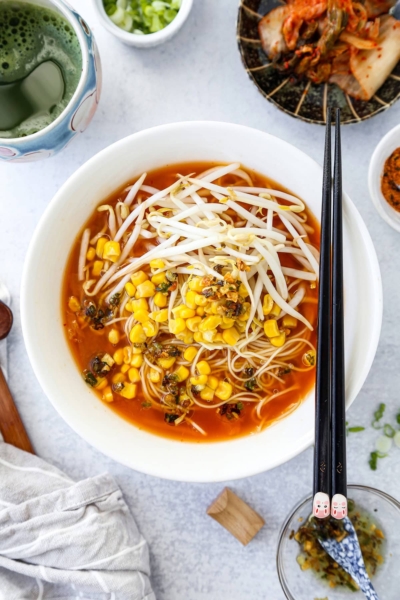Japanese noodle showdown: soba vs udon. There’s a lot to love when it comes to noodles in Japan. At first glance, it may seem like soba and udon are interchangeable. While both are delicious, there are a few key differences. Let’s break down ingredients, textures and the best recipes for each.
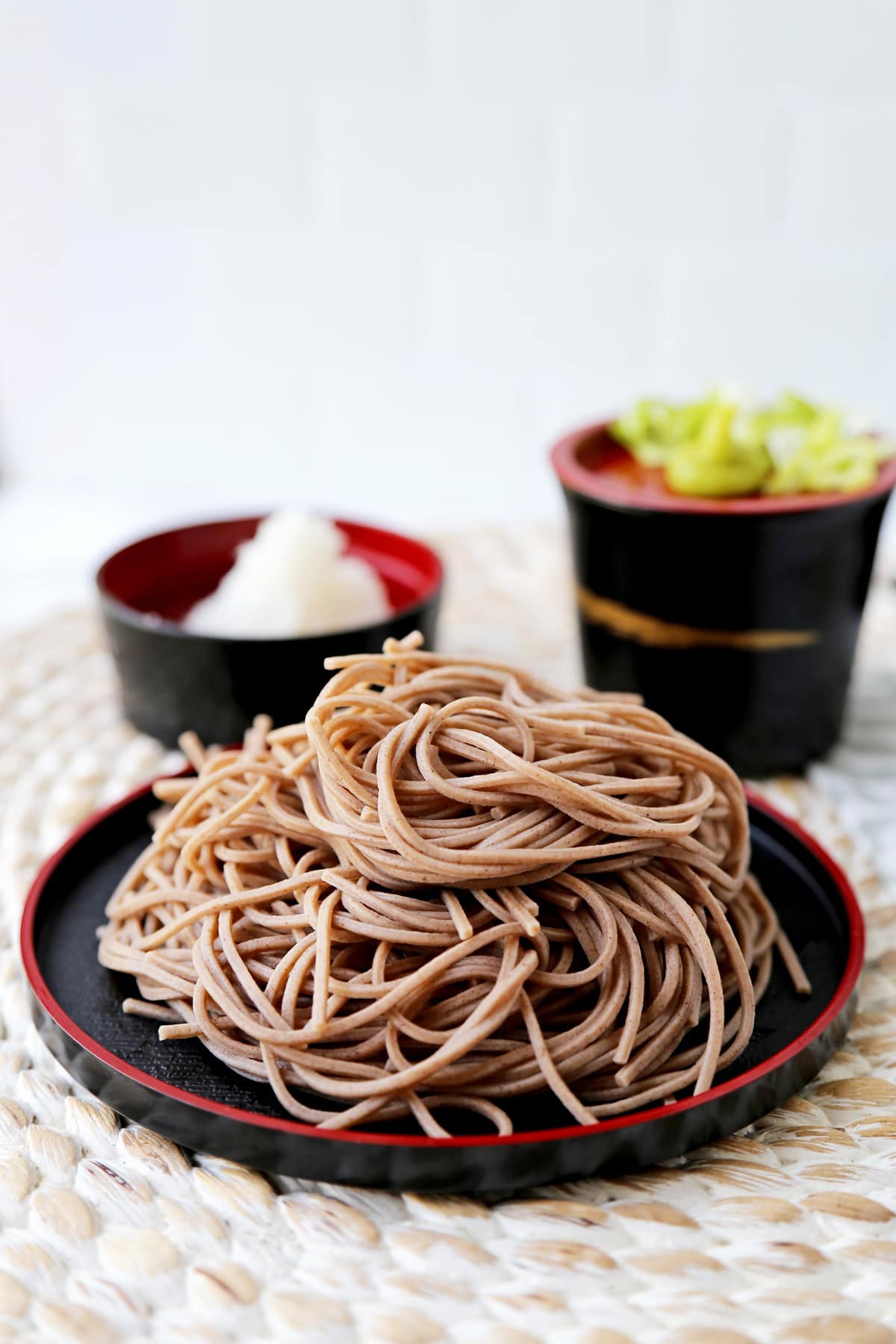
What is Soba
Soba noodles are long, thin Japanese noodles made of buckwheat flour and water – and sometimes a portion of wheat flour (more in this in a sec). They have a subtle nutty taste and and can vary in texture from chewy and springy – to dense and mildly grainy. This variation in texture from brand to brand depends on the amount of buckwheat used in production. General rule: more wheat flour, the smoother and springy the texture – more buckwheat, more dense.
Japanese buckwheat noodles are frequently served in soups (both hot and cold) and in salads. Soba can also vary in color from light grey to brown.
What are Soba Noodles Made From
Soba is typically comprised of buckwheat flour and water. However, there are multiple variations in soba production that determine what percentage of buckwheat is used – and if wheat flour is used as a binding agent. Salt is sometimes added as well.
- Juwari Soba: 100% buckwheat flour and water.
- Hachiwari Soba: 20% wheat and 80% buckwheat. The wheat flour is used as a binding agent. This is still considered authentic Japanese soba.
- There are also versions of soba that have a much higher ratio of wheat flour to buckwheat flour. They often appear lighter in color.
Sometimes additional flavoring agents are used in soba. For example, cha soba is flavored with green tea powder – and jinenjo soba utilizes nagaimo (mountain yam).
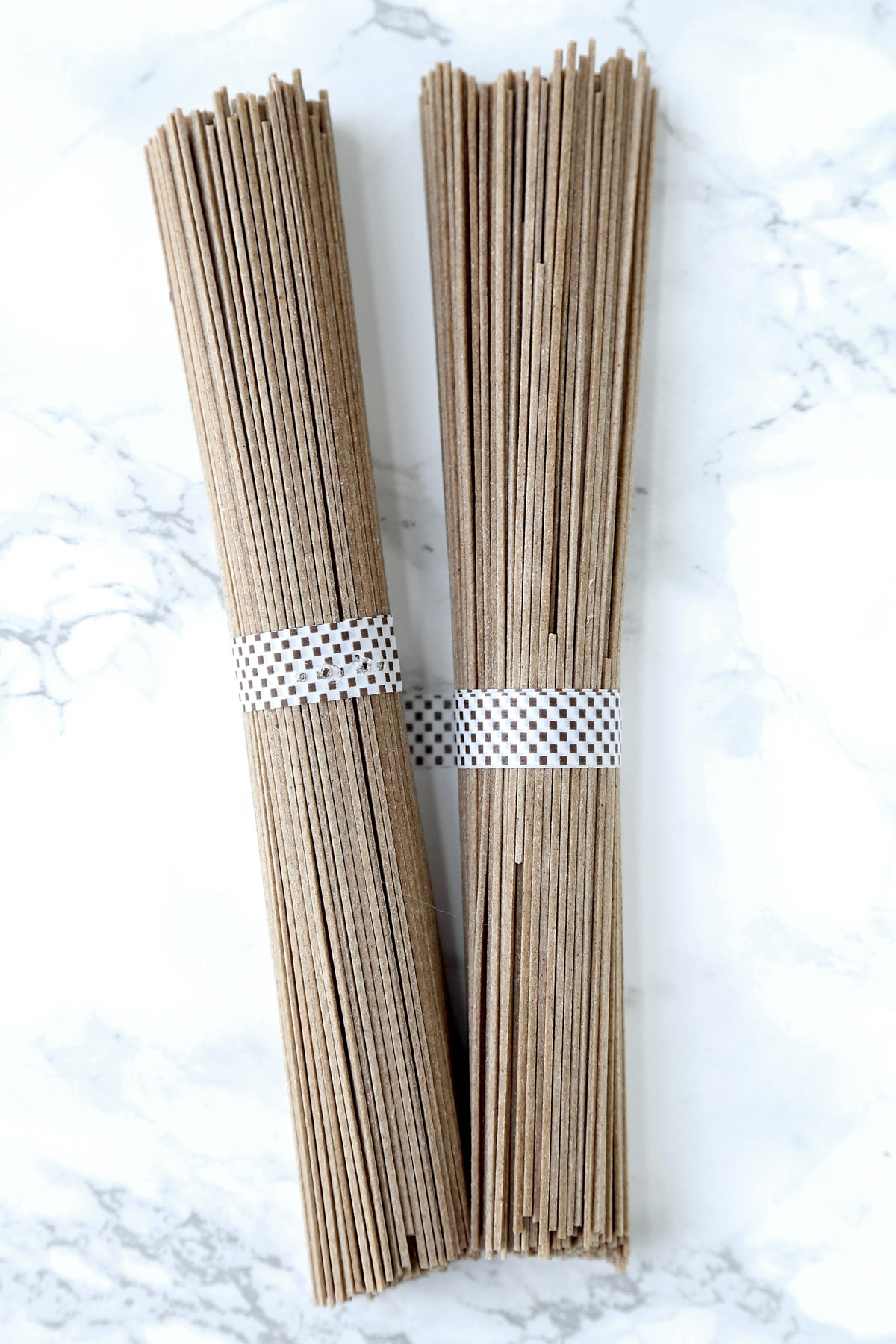
What is Buckwheat Flour
Buckwheat flour is made from ground buckwheat seeds. But buckwheat is not actually from the wheat family at all. Instead it comes from the same family of plants as rhubarb. It is a pseudo-grain. Other pseudo-grains include quinoa and amaranth.
Buckwheat flour is gluten free and has a mild nutty flavor with grassy notes. The flour is mixed with water (and sometimes a portion of wheat flour) to form a dough which is rolled and sliced to make soba noodles.
Buying Soba Noodles
When it comes to buying soba at the grocery store, there are typically two options: fresh-frozen and dry.
- Dry soba is handy to keep in the pantry since it is shelf-stable and cooks fairly quickly. However there can be some variation in the ingredients used in production from brand to brand (i.e. high salt content or high wheat flour content). I tend to favor dry soba with a very short ingredients list and a high ratio of buckwheat flour.
- The fresh-frozen options at Japanese grocery stores (in LA at least) tend to be premium soba noodles. Usually the juwari or hachiwari (nihachi) soba – and are absolutely delicious.
Note: Be generally wary of shelf stable, precooked soba that doesn’t require refrigeration. Aside from sub-par flavor and texture, these noodles also tend to contain a ton of preservatives.

Cooking Soba Noodles
A simple rule of thumb is to follow the cooking instructions on the package, since there will be variation in boiling times from brand to brand. Dry noodles are usually done in around 3-5 minutes.
Drain and rinse soba under cold water if it’s being used in a cold recipe like zaru soba.
Noodles going into hot soup will continue cooking in the broth, so drain them when al dente and use immediately.
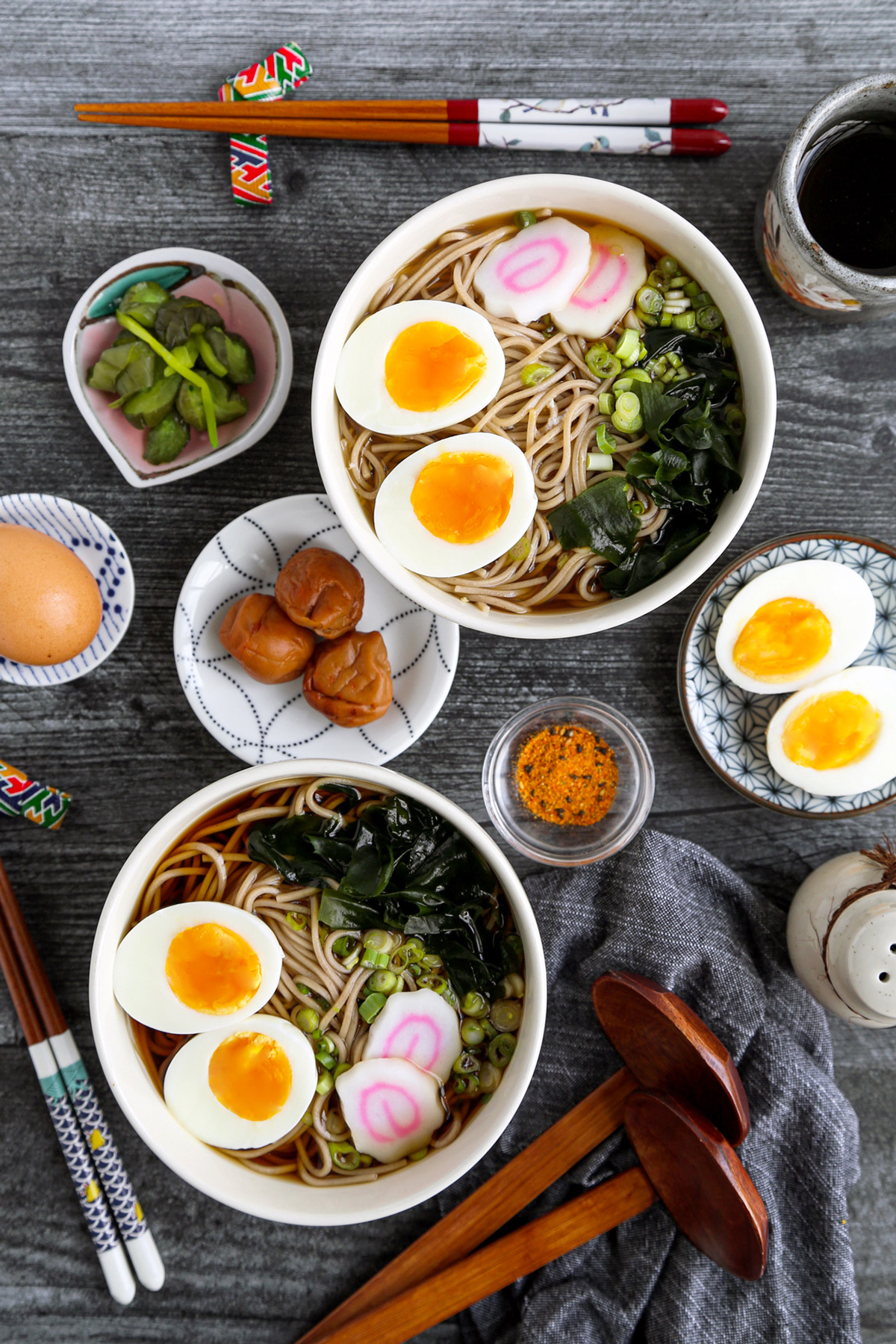
Soba Recipes
Soba noodles are frequently served either inside a hot soup – or on their own in cold preparations, with a highly concentrated broth on the side. Here are some popular soba dishes.
- Zaru Soba: Cold soba noodles dipped into a savory mentsuyu dipping sauce made of dashi, soy sauce and mirin. Wasabi is optional. This is one of the most iconic summertime soba preparations in Japan.
- Toshikoshi Soba: Soba served in a warm tsuyu broth – traditionally served on New Year’s Eve (I’ve added boiled eggs to this particular recipe, but it is typically served without).
- Tempura Soba: Tensoba features veggies and shrimp that have been fried in a light batter until crispy. Common vegetables include kabocha squash, lotus root, shiso leaves, etc. Shrimp tempura is the most iconic addition. Tempura soba can be served hot or cold.
- Naengmyeon: This is a cold Korean soba noodle recipe featuring a savory and briny broth made with dongchimi (Korean radish water / pickle brine).
Is Soba Healthy?
Soba noodles are fairly high in protein and heart-healthy fiber – and low in simple carbohydrates and calories. This is due to the use of buckwheat flour which is considered a superfood.
Since buckwheat flour is a complex carbohydrate, soba can keep you feeling full for longer since the body processes these types of carbs slowly.
Soba is typically considered more healthy than udon. However it is important to note two things:
- Only soba made with 100% buckwheat flour is gluten free.
- Complex carbohydrates can often be taxing on a sensitive digestive system. Udon might be a better choice if you’re feeling under the weather with a tummy bug or need a softer diet in general.
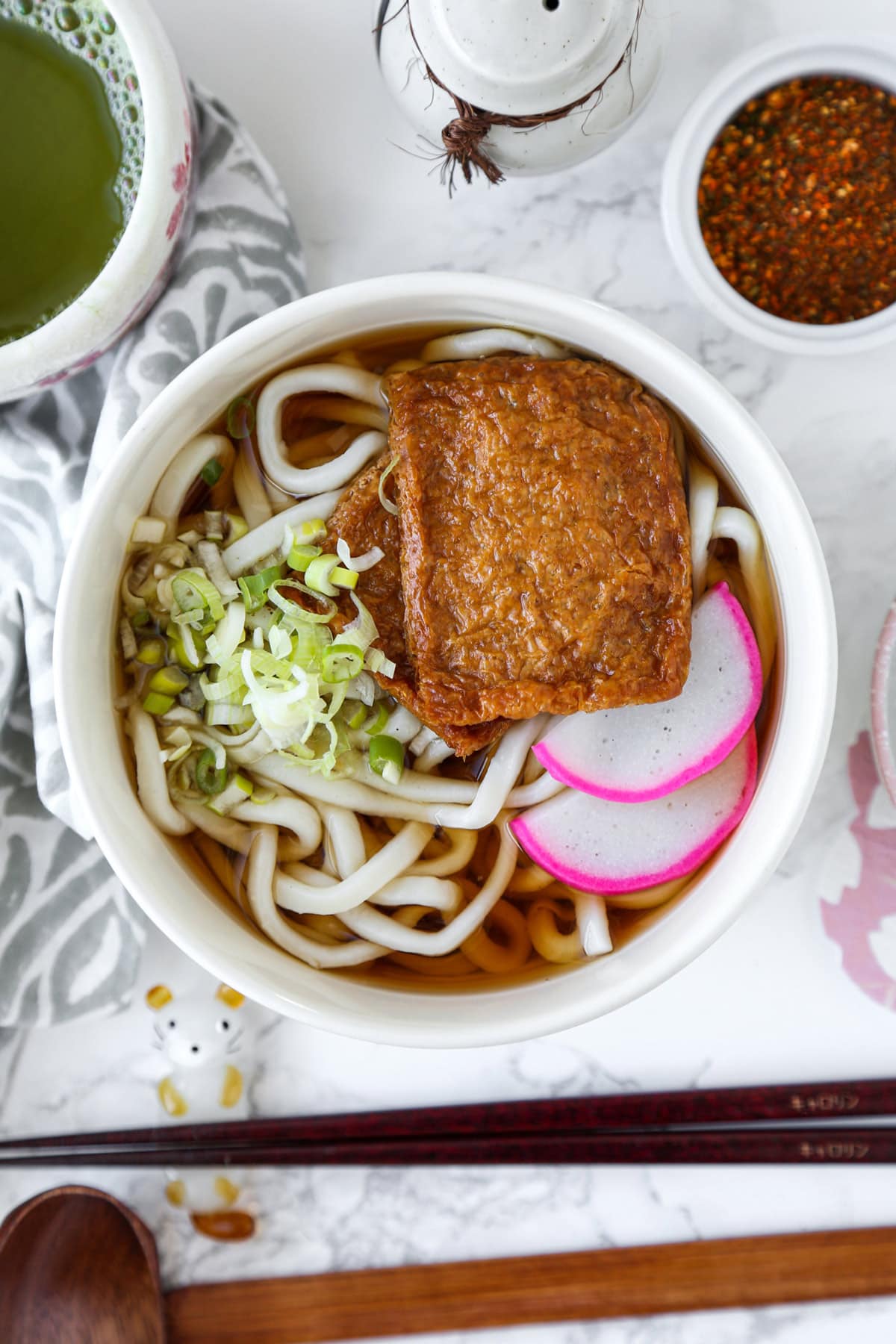
What is Udon
Udon noodles are thick, springy Japanese noodles made of wheat flour, water and salt. Known primarily for their bounce and chewiness, these noodles are commonly used in Japanese soups and stir fries. While this type of noodle has a mild flavor of its own, udon absorbs more liquid than soba – meaning that udon noodles soak in the flavors of your broth or stir fry very well.
Udon noodles are white in color and can be flat or round.
Udon Noodle Ingredients
The ingredients list for udon is fairly simple: all-purpose wheat flour, water and salt. It’s kneaded into a dough, and cut into strips. Home chefs making udon from scratch will use cornstarch or potato starch to keep the noodles from sticking together after they’ve been cut.
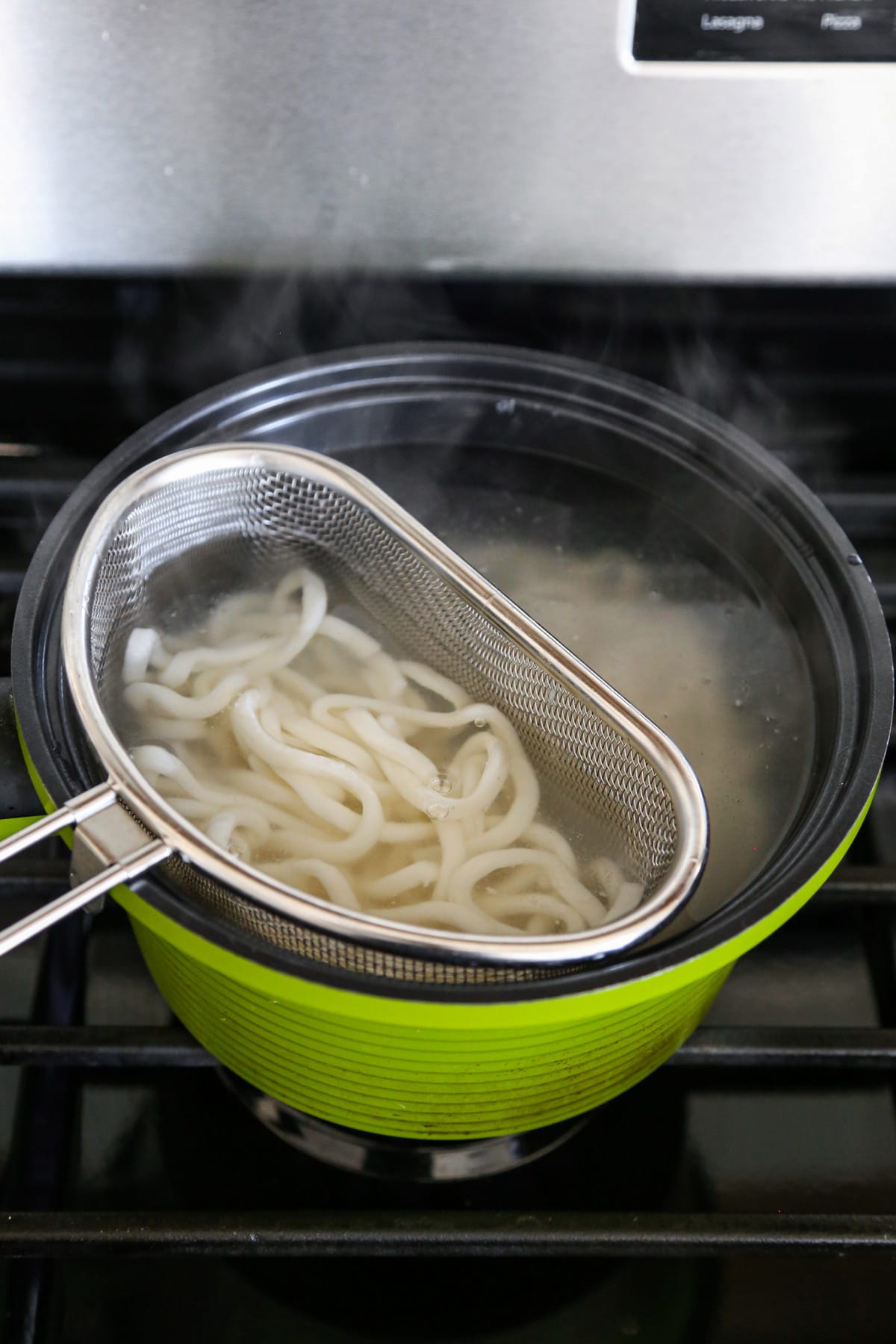
Udon Variations
When buying udon noodles at the grocery store you’ll find dry, frozen and fresh refrigerated versions.
- Frozen udon noodles are typically pre-cooked and then flash frozen. So they cook rather quickly in a pot of boiling water – usually 2-3 minutes.
- Dry udon tends to take longer – around 7-10 minutes.
As always, follow the cooking instructions on the package for best results.
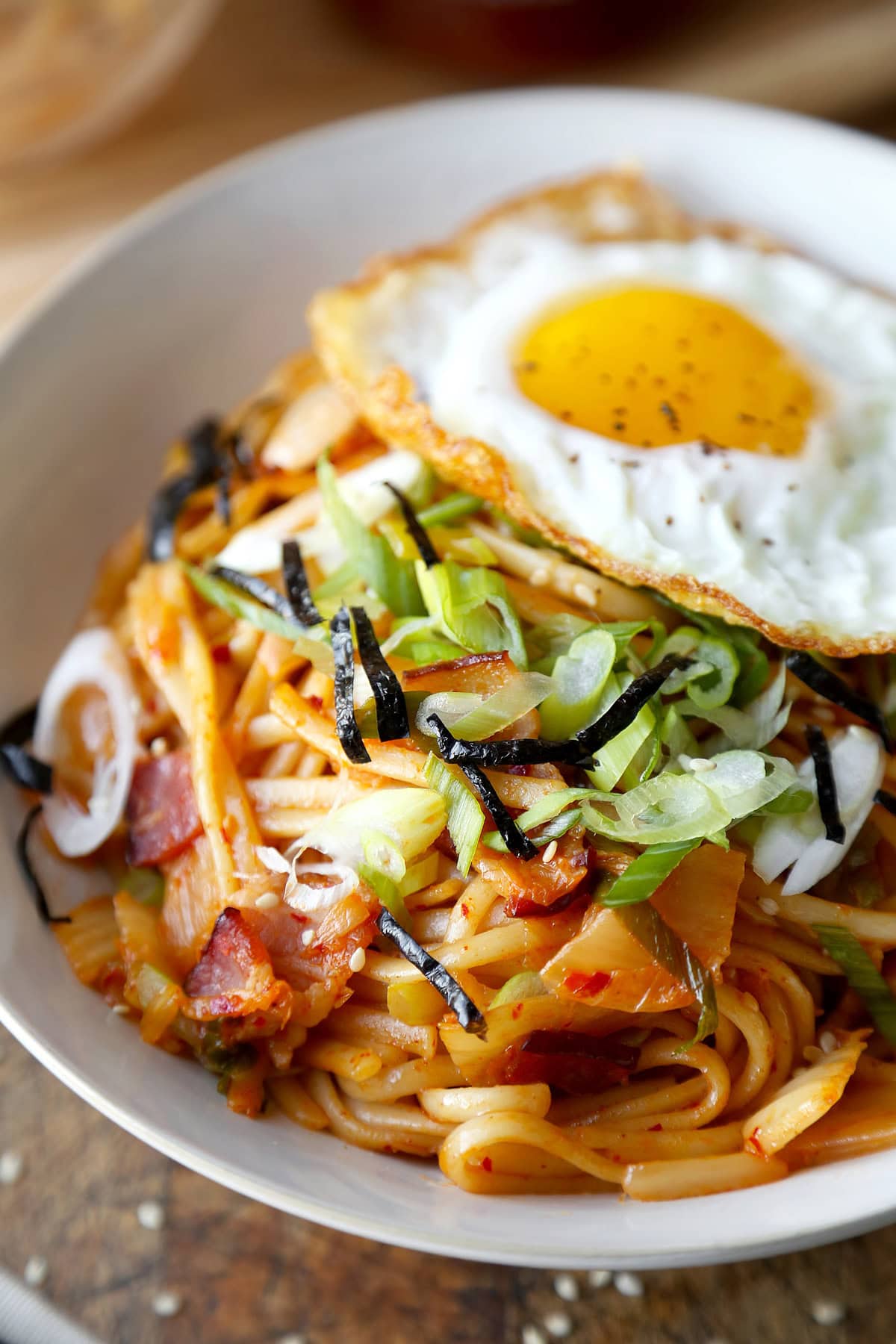
Udon Recipes
Udon noodles are often served in soup, but are commonly stir-fried as well. Here are some popular udon dishes.
- Basic Udon Soup: The warm dashi stock based broth is complimented by soy sauce, mirin and kombu – and the noodle soup is topped with nori and shiitake mushrooms. A stripped down version of this dish (typically with just the hot broth and shaved green onions) is called kake udon in Japanese.
- Kitsune Udon: The direct translation of kitsune udon is ‘fox udon.’ And that’s likely a nod to the color of the deep fried tofu pouches (called aburaage / or inari age) served in the soup. Common toppings include fish cakes and chopped scallions. Incidentally, kitsune udon is my favorite!
- Curry Udon: The dashi based broth is fortified with savory Japanese curry. It’s hearty comfort food that originated during the Meiji period in Tokyo.
- Yaki Udon: These chewy udon noodles are stir fried in a simple umami mixture of butter, dashi and soy sauce – then topped with nori and bonito flakes (katsuobushi). Check out this video to see how simple it is to make yaki udon at home (5 minutes or less!) along with four other easy essential Japanese recipes.
- Kimchi Udon Stir Fry: This is one of the noodle dishes that really shows off udon’s versatility. Because udon’s secret weapon is that it absorbs whatever flavor you throw at it (bacon and kimchi in this case). Top with a fried egg for the full experience.
Is Udon Healthy?
While udon noodles are low in fat, they are also fairly low in essential nutrients on their own. Most of the health benefits you’ll get from eating udon will come from the soup broth and / or additional ingredients you choose to add to any given recipe. That said, udon is almost always a healthier noodle choice than something like instant ramen.
Since udon noodles are made with wheat flour, they are not gluten-free.
When it comes to soba vs udon – the healthier choice is typically soba due to the buckwheat.
Soba vs Udon: The Main Takeaways
Here are the key differences between udon and soba:
- Ingredients: Soba is made either entirely from buckwheat flour – or a combination of buckwheat flour and wheat flour. Udon is made from 100% wheat flour.
- Appearance and Texture: Udon are thick, white noodles with a slippery, bouncy chewiness and neutral flavor profile – but they absorb more cooking flavors than soba. Soba noodles are thinner with a dense texture and a naturally nutty flavor.
- Nutrition: Soba is high in fiber due to the buckwheat flour, yet has a slightly higher calorie count than udon. Udon is higher in simple carbohydrates, but may be more gentle to digest.
Subscribe to my newsletter and receive the latest recipes and weekly favorites straight to your inbox. Join me on Pinterest, Facebook, and Instagram for more cooking tips and adventures!
So where do you fall on the soba vs udon spectrum? Do you have a favorite? Tell me about your favorite soba and udon recipes in the comments section!

